| » BROJ 77 |
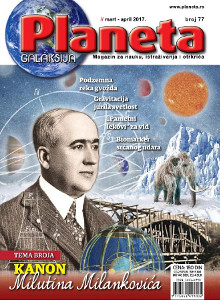 |
Godina XIV
Mart. 2017 - Maj. 2017.
|
|
| » Glavni naslovi |
SUMMARY
Summary
The Topic of this Issue
Milutin Milanković: Understanding climate change
|
|
 |
The great Serbian scientist Milutin Milanković,
born in Dalj (then Austria-Hungarian Empire),
who completed his university studies and
his Ph.D. in Vienna, developed a number of
theories in the field of applied mathematics,
solar radiation of the Earth, and climate
changes on our planet. After completing
his studies, he worked as a civil engineer in
Vienna, and in 1909 he was appointed chair
of the Department of Applied Mathematics of
the Faculty of Philosophy in Belgrade.
He published a number of works in
the Serbian and the German language:
Contribution to the Theory of Mathematical
Climate (1912), On Distribution of Solar
radiation on the Earth’s Surface (1918),
Mathematical Theory of Heat Phenomena
Caused by Solar Radiation (1920), Canon of
Solar Radiation (1939), Astronomical Theory
of Climate Variations (1957).
As a civil engineer in 1956 he design the
Babylon Tower of Modern technology,
statically the tallest possible building in the
world (height 21.4 km, foundation radius 112.8
km, having 1356 floors).
|
ENERGY
Cooking Stove Powered by Wind |
|
 |
Is it possible at present time to achieve 100
percent share of renewable energy sources
at global level, and stop using fossil fuels?
The simple answer could be: yes. The next
question could be: how and under which
conditions? Under the condition that several
forms of renewable energy (hydro and solar,
wind energy, bio-energy, geothermal energy,
and heat pumps) are integrated and used
together wherever possible.
According to data from 2016, currently at
global level renewable energy sources have a
share of 19.2 % in meeting the energy needs,
and 23.7 % in electricity generation. Total investments
are about 300 billion USD per year,
with an increasing trend. At national level,
so far about 30 states cover 20% of their total
energy needs from RES.
|
ECOLOGY
Invasive shell |
|
 |
One of the greatest threats to present
day water eco-systems are the invasive
species whose appearance threatens the
bio-diversity of a certain region. Invasive
species are those which do not naturally
inhabit a certain habitat but are intentionally
or unintentionally introduced to them. Their
spreading in such habitats produces negative
impacts on the eco-system and human health
and causes economic damage.
Mollusks, especially Corbicula, are among
the most invasive species in European sweet
water eco-systems. During the past decade,
these shells have spread in the region along
the Danube river in northern Serbia and their
massive appearance has been demonstrated
also in major tributaries of the Danube, including
the rivers Sava, Tisa, and Velika Morava.
This species in its great numbers threatens the
eco-system balance, impacts the water quality,
and can often cause problems in irrigation canals
and pipes, while sedimentation on boats
and ships can lead to damage.
|
GEOPHYSICS
“The underground river“ of melted iron |
|
 |
Deep beneath the surface of our planet
melted iron is moving at increasing
speeds. This liquid flow has been discovered
for the first time by readings of the magnetic
field 3,000 km below the soil of North
America and Russia, and this has been
observed from space.
This huge flow is 420 km wide and it has
tripled its speed since the year 2000, presently
circulating at the speed of 40-45 km annually,
under Siberia towards Europe. This is three times
faster that the typical speed of matter in
liquid state of the outer Earth core. Nobody
knows why this flow is accelerating, but scientists
believe that this natural phenomenon is
a billion years old and that it may help us understand
the Earth’s magnetic field which protects
us from Solar winds.
|
PHYSICS
Gravity “chasing”
the light |
|
 |
The speed of light should be the key
constant in physics, but in reality it does
vary. Such a change of belief could turn
around the generally accepted cosmic axioms.
In 1998, João Magueijo (Imperial College
London) stated that the speed of light could
vary and that this could have an impact on resolving
the problem which the cosmologists
call the horizon problem. This means that the
cosmos has reached its constant temperature
much sooner that photons, which travel at the
speed of light, could reach all corners of the
Universe.
The usual way to explain this riddle which is termed the inflation space, is by a theory
which explains the size and uniformity of
cosmos
|
MEDICINE
“Smart” medicines for sight in danger |
|
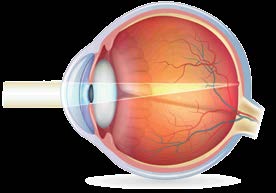 |
Thanks to advanced biological medicines
which prevent the pathological
proliferation of blood vessels it is possible to
stop the loss of eye-sight caused by diseases
which only a decade ago were believed to be
incurable. Dr Maja Škuletić, ophthalmologist
at the Bel Medic Hospital, explains how antiVEGF
therapy works.
|
MEDICINE
The infallible biomarker of heart attack |
|
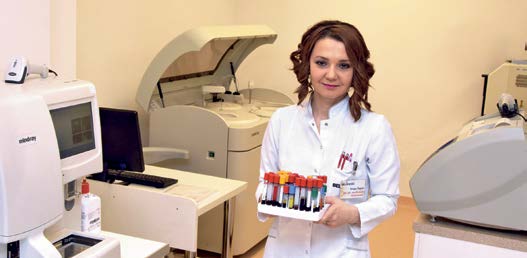 |
Troponin I is a valuable diagnostic marker
of miocardiac arrest and of other forms
of acute coronary syndrome. It can presently
be analyzed by advanced ummunochemical
tests significantly shortening the time for
diagnosing of these pathological states. The
new performances of the Troponin test are
discussed by pharmacist Sonja Šuput, medical
biochemist at the Bel Medic Hospital.
Highly sensitive Troponin test is a new old
laboratory test which not only reliably confirms clinical suspicion of the “heart attack”,
but can also assist in timely prevention of miocardic
infraction. One of the key cardiac biomarkers
of cardiomyocite necrosis - troponin
– has been used routinely in laboratories for
three decades whenever there is suspicion of
cardiovascular disease, but the new high-sensitive
troponin – hsTn is much more sensitive and
considerably shortens the time needed to diagnose
miocardic infraction.
|
MEDICINE
The golden standard in heart diagnosis |
|
 |
Since new technologies have enabled
getting the radiological image in real time,
seeing organic structures in movement,
cardiology is also making use of the great
diagnostic advantages offered by MRI. What
is more, the MRI has become the golden
standard for assessment of functional
parameters of the cardiac muscle, says
professor Ružica Maksimović, MD, radiologist,
consultant at the Bel Medic Hospital.
Are there any pathological changes in the
structure of the heart muscle? Are there ischemic
changes? How much has the miocardiac
muscle been damaged by infraction, will it
recover? These are just some of the questions
which can best and most reliably be answered
by MRI – a non-invasive and completely harmless
diagnostic method that many branches
of medicine have been relying on for decades
now, but used by cardiology only as of recently.
|
ASTROPHYSICS
Space signal captured |
|
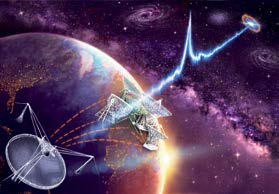 |
For the first time man managed to observe
the sudden radio-impulse in cosmos all
the way to its source. Scientists are not yet sure what was the cause of these radio-waves
but they know where one of them comes
from. This offers new insights into studying
their origin.
Fast radio bursts (FRB) are transient astronomical
radio-impulses lasting only for a number
of milliseconds. It is not yet explained phenomenon
of the universe – powerful radio signals
appearing suddenly at great distances
and disappearing without trace. They are the
key reason for everything, from black holes to
extraterrestrial intelligence. Due to their transient
nature and telescopes which can observe
a smaller part of the sky at any moment, observance
was made of 18 signals of FRB, of which
only one was repeated, specifically FRB 121102.
|
CONQUERING SPACE
Japanese in space |
|
 |
FThe high technological awareness of
Japanese scientists, politicians and
businessmen, and the nation in general, has
made it possible to achieve the economic
progress of Japan along the first front line of
technological advancement. Staying on top
in the global fight to master new technologies
and use them in production and achieve
sales of state of the art products implies the
need to conquer the broad field of cosmo0s
technologies such as production of rocket
carriers, commercial satellites, and cosmic
probes – but also sending men to space while
mastering the necessary knowledge and
technology for stay in orbital stations. Cosmic
research in Japan is done by the JAXA (Japan
Aerospace Exploration Agency), founded 2003.
So far, 11 Japanese nationals have stayed
in space. They each had their individual astronautic
experience and some broke records in
terms of number of flights and length of stay.
All flights are done in close cooperation with
NASA and the Russian RKA.
|
Kompletni tekstove sa slikama i prilozima potražite u magazinu
"PLANETA" - štampano izdanje ili u ON LINE prodaji Elektronskog izdanja
"Novinarnica"
|
|
|
» Prijatelji Planete |
| » UZ 100 BR. „PLANETE” |
|

|
| » 20 GODINA PLANETE |



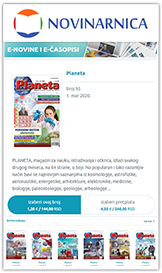
6 digitalnih izdanja:
4,58 EUR/540,00 RSD
Uštedite čitajući digitalna izdanja 50%
Samo ovo izdanje:
1,22 EUR/144,00 RSD
Uštedite čitajući digitalno izdanje 20%
www.novinarnica.net
Čitajte na kompjuteru, tabletu ili mobilnom telefonu

|
| » PRELISTAJTE |
NOVINARNICA predlaže
Prelistajte besplatno
primerke
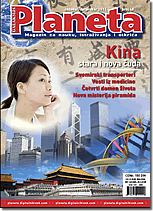
Planeta Br 48

Planeta Br 63
|
| » BROJ 120 |
 |
Godina XXI
Novembar - Decembar 2024.
|
|
|

